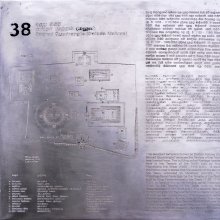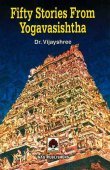Heroism: 2 definitions
Introduction:
Heroism means something in Hinduism, Sanskrit. If you want to know the exact meaning, history, etymology or English translation of this term then check out the descriptions on this page. Add your comment or reference to a book if you want to contribute to this summary article.
Images (photo gallery)
In Hinduism
Natyashastra (theatrics and dramaturgy)
Source: Shodhganga: Elements of Art and Architecture in the Trtiyakhanda of the Visnudharmottarapurana (natya)Heroism is associated with Arāla-hasta: one of the twenty-two Single-hand Gestures (in Indian Dramas) (known as asaṃyuktahastas), according to the Viṣṇudharmottarapurāṇa, an ancient Sanskrit text which (being encyclopedic in nature) deals with a variety of cultural topics such as arts, architecture, music, grammar and astronomy.—The word arāla means bent or crooked. According to the Viṣṇudharmottarapurāṇa, the forefinger is slightly bent like a bow. The thumb is bent in this hand posture and the remaining fingers are strengthen and slightly curved. This posture shows some states like depth, entity, heroism etc. With the help of this posture, the dancer can do the acting of assembling hair and wiping of sweat.

Natyashastra (नाट्यशास्त्र, nāṭyaśāstra) refers to both the ancient Indian tradition (shastra) of performing arts, (natya—theatrics, drama, dance, music), as well as the name of a Sanskrit work dealing with these subjects. It also teaches the rules for composing Dramatic plays (nataka), construction and performance of Theater, and Poetic works (kavya).
Shilpashastra (iconography)
Source: Shodhganga: Elements of Art and Architecture in the Trtiyakhanda of the Visnudharmottarapurana (shilpa)1) Heroism is associated with Warriors, which follows specific guidelines in the tradition of ancient Indian Painting (citra), according to the Viṣṇudharmottarapurāṇa, an ancient Sanskrit text which (being encyclopedic in nature) deals with a variety of cultural topics such as arts, architecture, music, grammar and astronomy.—The pictures of warriors should express the feeling of heroism. That is why the face of a soldier is instructed as to be painted with frowns and the face should have powerful and arrogant look. Thus the Viṣṇudharmottarapurāṇa establishes the fact that even in the pictures; the people belonging to different class and profession [e.g., warriors expressing heroism] were projected with specific attire so that general people can equate the picture with the practical character.
2) Heroism is associated with The Heroic (sentiment) refers to one of the Nine Sentiments (citrarasa) in ancient Indian Painting (citra).—Painting is a medium of showing the inner feelings and emotions of a painter which can strikes the inherent sentiments of connoisseur’s mind [e.g., the heroic sentiment (vīra)]. [...] In a picture, vīrarasa i.e., heroism can be reflected through the display of prowess along with a noble look of promise and firmness of the person drawn in the picture. According to the Viṣṇudharmottarapurāṇa, sometimes heroism can be shown with raised eyebrows also.

Shilpashastra (शिल्पशास्त्र, śilpaśāstra) represents the ancient Indian science (shastra) of creative arts (shilpa) such as sculpture, iconography and painting. Closely related to Vastushastra (architecture), they often share the same literature.
See also (Relevant definitions)
Query error!
Full-text (+309): Shaurya, Virya, Virarasa, Vikrama, Vaira, Vira, Virata, Shutirya, Shautirya, Suvikranta, Yuddhavira, Parakrama, Sauvirya, Vairita, Utsahavardhana, Surata, Kshatradharma, Shotirya, Tivrapaurusha, Suvirya.
Relevant text
Search found 133 books and stories containing Heroism; (plurals include: Heroisms). You can also click to the full overview containing English textual excerpts. Below are direct links for the most relevant articles:
Parables of Rama (by Swami Rama Tirtha)
Story 141 - The Secret of Success < [Chapter XXII - Success]
Bhagavad-gita (with Vaishnava commentaries) (by Narayana Gosvami)
Verse 18.43 < [Chapter 18 - Mokṣa-yoga (the Yoga of Liberation)]
Introduction (Śrīmad Bhagavad-gītā) < [Introduction (to the Hindi edition)]
Yavanajataka by Sphujidhvaja [Sanskrit/English] (by Michael D Neely)
Verse 10.18 < [Chapter 10 - The Application of the Yogas of the Moon]
Verse 10.9 < [Chapter 10 - The Application of the Yogas of the Moon]
Verse 10.23 < [Chapter 10 - The Application of the Yogas of the Moon]
Brihat Jataka by Varahamihira [Sanskrit/English] (by Michael D Neely)
Verse 21.9 < [Chapter 22 - Miscellaneous Yogas]
Verse 20.3 < [Chapter 21 - Support Yogas]
Verse 20.5 < [Chapter 21 - Support Yogas]
Dramaturgy in the Venisamhara (by Debi Prasad Namasudra)
Vīra Rasa (emotion of zeal) < [Chapter 4 - Dramaturgy in Veṇīsaṃhāra]
The backdrop of the Srikanthacarita and the Mankhakosa (by Dhrubajit Sarma)
Part 3 - Guṇa or the quality < [Chapter III - Literary Assessment Of The Śrīkaṇṭhacarita]
Part 2a - Rasa (1): Vīra or the sentiment of heroism < [Chapter III - Literary Assessment Of The Śrīkaṇṭhacarita]
Part 2 - Rasa or the sentiment < [Chapter III - Literary Assessment Of The Śrīkaṇṭhacarita]
Related products

